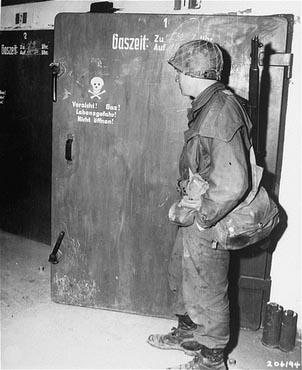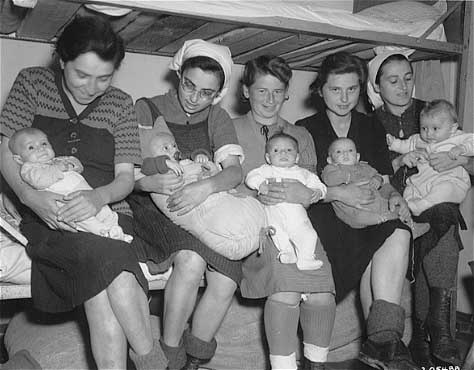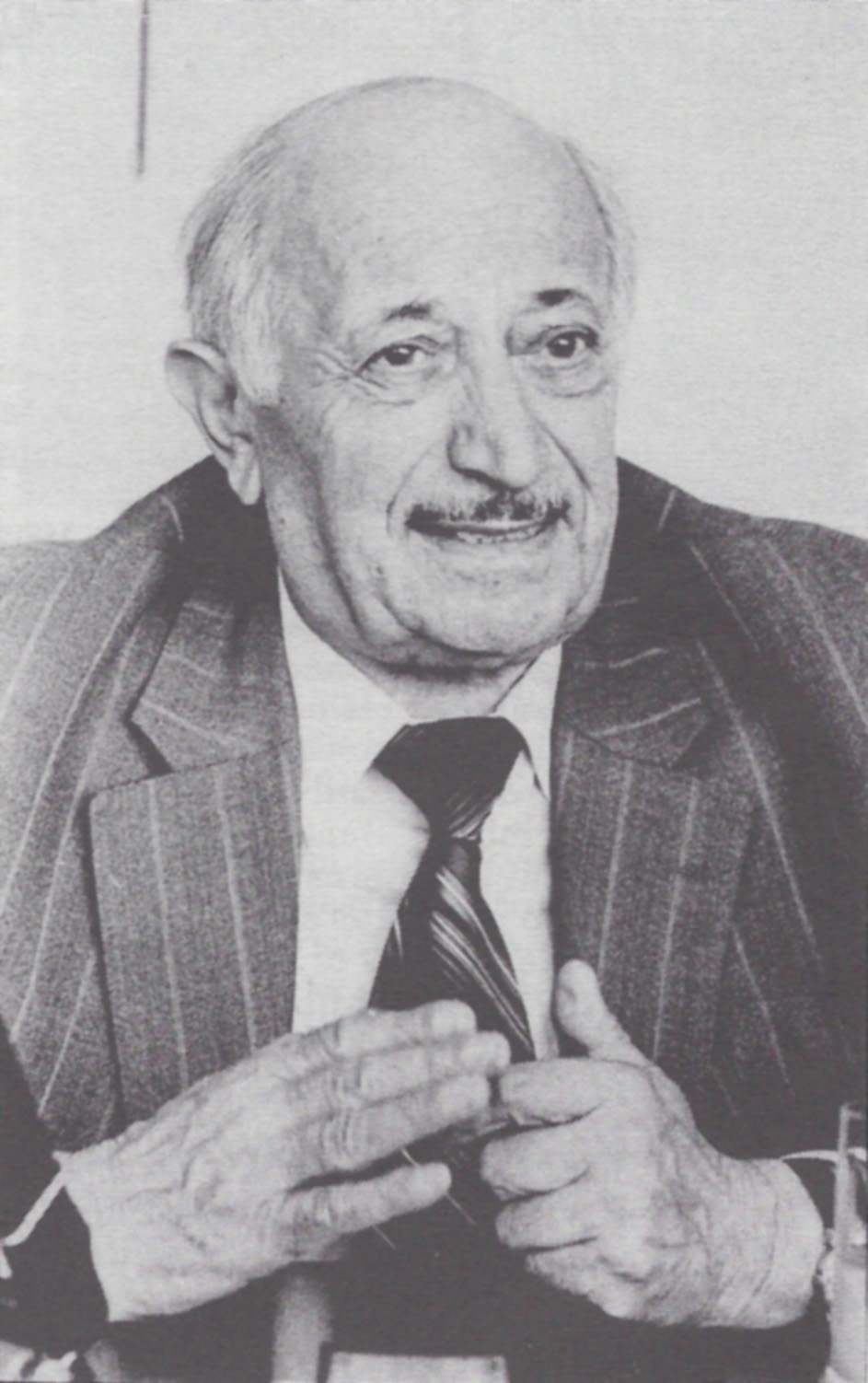Wiesenthal Re-Confirms: ‘No Extermination Camps on German Soil’
In a letter published in a January issue of The Stars and Stripes, a newspaper for US military service personnel, Simon Wiesenthal re-confirmed, in passing, that “there were no extermination camps on German soil” during the Second World War. He made the identical statement in a letter published in the April 1975 issue of the British periodical Books and Bookmen.
While the truth of Wiesenthal’s words here has been known for years, this statement is significant, first of all, because it is made by an internationally renowned and supposedly knowledgeable and reputable figure, and, second, because it once again confirms a point that revisionists have been making for years. What Wiesenthal does not mention, and what is not widely understood, is that he also implicitly confirms the drastic change that has taken place over the years in the Holocaust extermination story.
What the “Nazi hunter” now says contrasts sharply with what was authoritatively claimed in the decades following the Second World War. At the great Nuremberg Tribunal of 1945-1946, for example, Allied government officials presented apparently conclusive evidence to prove that camps “on German soil” — such as Dachau and Buchenwald — were “extermination” centers. Sir Hartley Shawcross, chief British prosecutor at the main Nuremberg trial, accordingly declared in his closing address on July 26, 1946, that “murder [was] conducted like some mass production industry in the gas chambers and the ovens” of Buchenwald, Dachau, Oranienburg — all “on German soil” — as well as at other German-run camps.
‘Evidence’ of Gassings at Dachau
Abundant “proof” that inmates were gassed at Dachau has been provided over the years, most notably at the main Nuremberg trial of 1945-1946. Former inmate Dr. Franz Blaha, for example, provided eyewitness testimony at Nuremberg about gas chamber killings there of “many prisoners.”

Wiesenthal’s letter, reproduced here in facsimile, but slightly enlarged, as it appeared in the January 24, 1993, issue of the daily “Stars and Stripes” (European edition), page 14.
According to a May 1945 US government document, which was accepted as evidence by the Nuremberg Tribunal as document L-159 (USA-222), “a distinguishing feature of the Dachau Camp was the gas chamber for the execution of prisoners.” The official report went on to describe the alleged gassing operation in some detail. (For more about such “evidence,” see: R. Faurisson, The Journal of Historical Review, Fall 1990, pp. 296-307.)
‘Evidence’ of Extermination at Buchenwald
Superficially impressive evidence has likewise been presented over the years to “prove” that the Buchenwald camp was an “extermination” center. For example, an April 1945 US Army report about Buchenwald prepared for the Supreme Allied Headquarters in Europe declared that the “mission of the camp” was “an extermination factory.”
The May 1945 US government report on the German camps (already cited), which was accepted as evidence by the Nuremberg Tribunal as document L-159, similarly described Buchenwald as an “extermination factory.” An official French government report accepted by the Tribunal as exhibit RF-301 (document 274-F) charged:
Everything had been provided for down to the smallest detail. In 1944, at Buchenwald, they had even lengthened a railway line so that the deportees might be led directly to the gas chamber. Certain [of the gas chambers] had a floor that tipped and immediately directed the bodies into the room with the crematory oven.
(For more on such “evidence,” see: M. Weber, “Buchenwald: Legend and Reality,” The Journal of Historical Review, Winter 1986-1987.)
Broszat’s Acknowledgment
Such official claims of extermination and gassing at camps in Germany proper persisted until August 1960, when Dr. Martin Broszat of Germany’s semi-official Institute for Contemporary History acknowledged in a letter published in the Hamburg weekly Die Zeit that such allegations were not true. In doing so, Broszat implicitly also conceded that the “evidence” presented at Nuremberg and elsewhere for extermination and gassings in those camps is bogus. (The complete text of Broszat’s letter is given in translation below.)

This US Army photo was taken at Dachau on April 30, 1945, one day after the camp’s capture. It shows a GI standing in front of a door marked with a skull and crossbones and the words “Caution! Gas! Life danger! Do not open!” According to the official caption, “these chambers were used by Nazi guards for killing prisoners of the infamous Dachau concentration camp.” In fact, this is a small disinfection gas chamber used for delousing clothes. It was never used to kill people. For several decades, this photo has been widely reproduced to help keep alive the notorious Dachau “gas chamber” myth. (US Army photo SC 206194.)
Ignorance
Nevertheless, some people still persist in affirming the now-discredited story of gassings at Dachau. It is precisely such ignorance that prompted Wiesenthal’s recent statement.
In a letter published in the December 3, 1992, issue of The Stars and Stripes (European edition), J. Fulton-Scott, a veteran who had been “stationed at Dachau immediately after the war” told readers: “Everything [there] was still intact, including human ashes in the grates of the crematoriums and the blood-stained fingernail claw marks on the walls of the gas chambers.” Similarly, in a letter in the January 11 issue, Ben Kerns told readers about his visit to the camp in 1945 as a sergeant with the US Third Army. He attested to having seen there “a gas chamber with the chilling sign ‘Dusche’ (shower) over the door.”
The Stars and Stripes editors also seem to accept the view that there was a homicidal gas chamber at Dachau. Adjacent to Wiesenthal’s letter in the January 24 issue appears a widely reproduced US Army photograph with the caption: “A 7th Army soldier examines the gas chamber at Dachau at the end of World War II.” In fact — and as all reputable specialists of the subject now readily concede — this was a small non-homicidal delousing gas chamber that was never used to kill people.
The Wiesenthal Record
While it is gratifying to note that, in his recent “Revisionist” letter, Wiesenthal implicitly “denies history” as “established” by the Nuremberg Tribunal, it must be pointed out that nearly everything else he says is untrue.
There is not a shred of evidence, for example, that “a gas chamber was in the process of being built at Dachau, but it was never completed.” (See “The Second Leuchter Report” by American gas chamber expert Fred Leuchter in The Journal of Historical Review, Fall 1990.) There is likewise no proof that “mentally and physically handicapped people were killed” by gas at any of the four “institutions” Wiesenthal mentions.

Jewish babies at Dachau. These Hungarian Jewish women and their babies were photographed on May 1, 1945, two days after the liberation of the camp. The official US Army caption reports that these Jewish babies were born during the final months of German control of the camp. (US Army photo SC 205488.)
Actually — and contrary to his highly flattering public image — the renowned “Nazi hunter” has a well-documented but little-known record of deceit, mendacity and prevarication. Some highlights:
Wiesenthal repeatedly lied about his alleged role in locating Adolf Eichmann, was consistently wrong about Josef Mengele, and falsely accused Polish-American Frank Walus of having murdered Jews in Poland as a Gestapo official. Wiesenthal has absurdly charged that the Germans exterminated Jews in “electrocution chambers,” and that they manufactured bars of soap from the bodies of murdered Jews. His deception about his own wartime activities prompted Austrian Chancellor Bruno Kreisky (himself of Jewish ancestry) to accuse the “Nazi hunter” of having collaborated with his wartime oppressors. (For details about Wiesenthal’s record, see: M. Weber, “Simon Wiesenthal: Bogus Nazi Hunter,” The Journal of Historical Review, Winter 1989-90.)
Finally, Wiesenthal has even lied about his most widely-cited concession to truth. Concerned about the way that various Revisionists were quoting his 1975 Books and Bookmen letter, he simply denied ever having written it. In a letter dated May 12, 1986, to Professor John George of Central State University in Edmond, Oklahoma, Wiesenthal wrote: “I have never stated that ‘there were no extermination camps on German soil.’ This quote is false. I could never have said such a thing.”
— M.W. and G.R.
From The Journal of Historical Review, May/June 1993 (Vol. 13, No. 3), pages 9-11.
